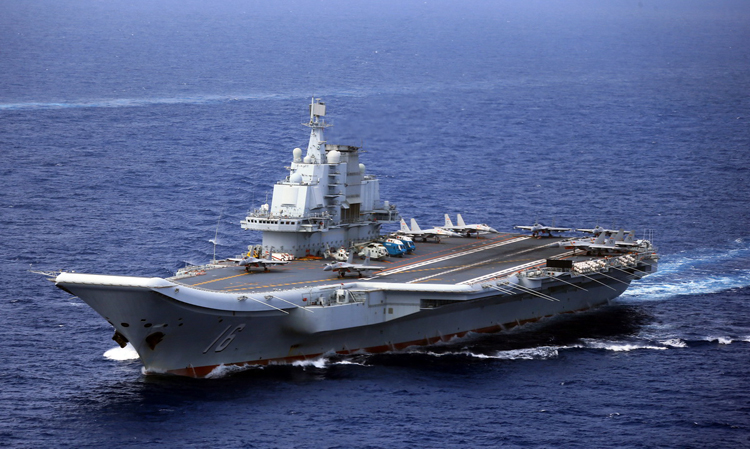INDIAN ARMED FORCES CHIEFS ON OUR RELENTLESS AND FOCUSED PUBLISHING EFFORTS

The insightful articles, inspiring narrations and analytical perspectives presented by the Editorial Team, establish an alluring connect with the reader. My compliments and best wishes to SP Guide Publications.

"Over the past 60 years, the growth of SP Guide Publications has mirrored the rising stature of Indian Navy. Its well-researched and informative magazines on Defence and Aerospace sector have served to shape an educated opinion of our military personnel, policy makers and the public alike. I wish SP's Publication team continued success, fair winds and following seas in all future endeavour!"

Since, its inception in 1964, SP Guide Publications has consistently demonstrated commitment to high-quality journalism in the aerospace and defence sectors, earning a well-deserved reputation as Asia's largest media house in this domain. I wish SP Guide Publications continued success in its pursuit of excellence.
- Operation Sindoor: Resolute yet Restrained
- India’s Operation Sindoor Sends a Clear Message to Terror and the World – ‘ZERO TOLERANCE’
- Japan and India set forth a defence cooperation consultancy framework, talks on tank and jet engines
- Terrorist Attack in Pahalgam in Kashmir: Unfolding a long surgical war against PAK
- Lt General Pratik Sharma takes over Command of Indian Army's Northern Command
China's AI-Powered Drone-Ship and Super-Carrier
The world's first AI-operated drone carrier Zhu Hai Yun is capable of launching surface and sub-surface drones that would be invaluable for data collection but the Chinese military will also be able to gather military intelligence that would help in navigation of submarines, in addition to launching swarm attacks on targets ashore or enemy air defence systems, allowing for more traditional manned capabilities to be more effective
 |
The Author is Former Director General of Information Systems and A Special Forces Veteran, Indian Army |

On May 18, 2022, China launched the world's first AI-operated drone carrier at Guangzhou. Called Zhu Hai Yun, it is an unmanned vessel that travels at a top speed of 18 knots (about 32 km/h). The 88.5-meter-long ship has a large open deck for storing, launching and recovering flying drones. Its AI operating system allows it to carry 50 flying, surface and submersible drones that can launch and recover autonomously. It is also equipped with launch and recovery equipment for aquatic drones and the ship’s drones are reportedly capable of forming a network with which to observe targets.
A Pentagon report released in May 2022 has said that China aims to build at least six aircraft battle groups by 2035. Chinese navy is the world's biggest maritime force, with 355 vessels. It said China was expected to expand the fleet to 420 ships in the next four years, and to 460 by 2030. The implications for the Indian Ocean and India in particular are obvious. A Chinese aircraft battle group could appear in the Indian Ocean in 2-3 year time or even earlier. This should be viewed in the context of periodic political assertions that there is no dearth of money for military modernisation simultaneous with prompted media blitz that two aircraft carriers are sufficient for the Indian Navy.
China aims to build at least six aircraft battle groups by 2035. Chinese navy is the world's biggest maritime force, with 355 vessels. It said China was expected to expand the fleet to 420 ships in the next four years, and to 460 by 2030.
The assumed use of Zhu Hai Yun is maritime research, intelligence-gathering and potentially repelling enemy drone swarms but the military applications of this mother-drone ship would be immense, whether part of an aircraft carrier battle group, part of another flotilla or individually deployed on pretext of ocean survey. Zhu Hai Yun is capable of launching surface and sub-surface drones that would be invaluable for data collection but the Chinese military will also be able to gather military intelligence that would help in navigation of submarines, in addition to launching swarm attacks on targets ashore or enemy air defence systems, allowing for more traditional manned capabilities to be more effective.
According to the Chinese state-run Science and Technology Daily, Zhu Hai Yun will be deployed to carry out marine scientific research and observation and serve various roles in marine disaster prevention and mitigation, environmental monitoring and offshore wind farm maintenance. Dake Chen, Director of the Southern Marine Science and Engineering Guangdong Laboratory that owns the ship, told media that “the vessel is not only an unprecedented precision tool at the frontier of marine science, but also a platform for marine disaster prevention and mitigation, seabed precision mapping, marine environment monitoring, and maritime search and rescue.”
It is not known what quantum of drones aboard Zhu Hai Yun would be armed but for sure armed drones would be part of the arsenal, implications of which need to be taken into account
At the moment it is not known what quantum of drones aboard Zhu Hai Yun would be armed but for sure armed drones would be part of the arsenal, implications of which need to be taken into account whether used singly, in pairs or in swarms. It is a revolutionary concept with ramification in warfare at sea and once more China has surprised the world.

Construction of Zhu Hai Yun at Huangpu Wenchong Shipyard began only in July 2021, with all its core components like power, propulsion, survey operation support systems and custom AI system independently researched and developed indigenously. Also, China’s Yunzhou Tech company is working on a drone ship carrying six smaller water drones to attack the surface of enemy ships. These six drones will reportedly work in a coordinated manner to surround the enemy ship and then proceed with offensive operations. The drones are intended to share sensor data, track target vessels at high speed, conduct intercepts, “expel” intruding vessels and are capable of autonomous decision-making as a group.
On June 17, 2022, China announced the launch of this third aircraft carrier name ‘Fujian’, which is more technically advanced - first catapult aircraft carrier wholly designed and built by China
Concurrently there was is news that China was close to launch its largest and most advanced aircraft carrier so far - ‘Type-003’. Satellite imagery accessed by America’s Centre for Strategic and International Studies (CSIS) and put out in public domain showed the warship was positioned to launch at the Jiangnan shipyard. However, on June 17, 2022, China announced the launch of this third aircraft carrier name ‘Fujian’, which is more technically advanced - first catapult aircraft carrier wholly designed and built by China. CCTV reported that sailing and mooring tests are to be carried out as planned after the ship launch. Speculation is that with the series of outfitting and tests, it could take up to two years for Fujian to become operational.
China’s future aircraft carrier are to have greater endurance and a catapult launch system capable of launching various types of fighter jets and early warning aircraft that can be launched from its deck. China presently has two operational aircraft carriers. In December 2016, China displayed its first aircraft carrier, CNS ‘Liaoning’, undertaking its first exercise at sea. Three years later in December 2019, China commissioned one more carrier, the CNS ‘Shandong’. India is scheduled to launch its second aircraft carrier INS ‘Vikrant’ by August this year.





